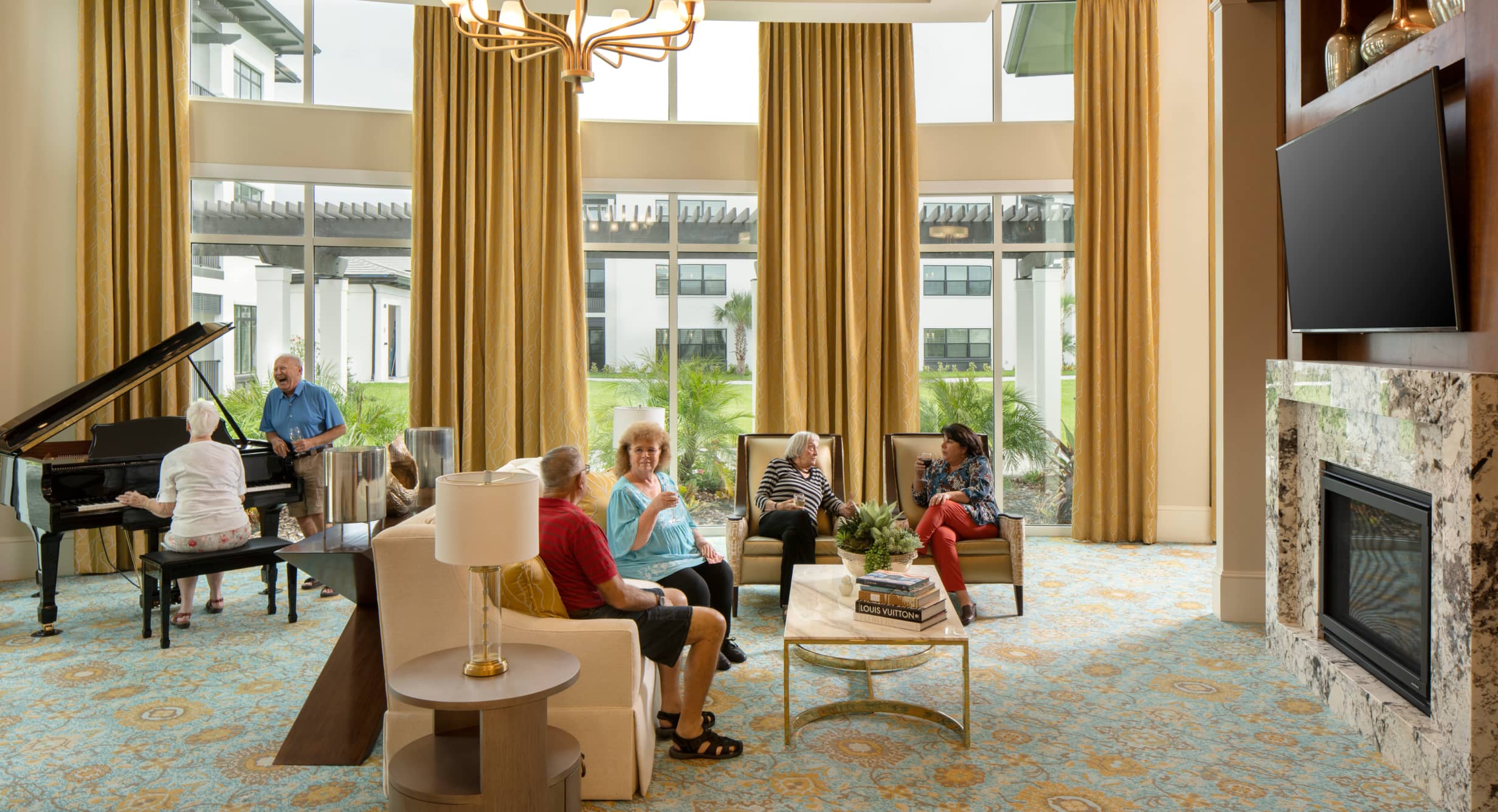Key Takeaways
- Technology is revolutionizing senior living by improving accessibility, communication, and entertainment.
- Understanding the benefits of tech integration in senior environments enhances quality of life.
- Combining modern solutions and traditional care can create a balanced experience for seniors.
Introduction to Technology in Senior Living
In recent years, the landscape of senior living has witnessed a significant transformation, thanks to the pivotal role of technology. Implementing creative solutions improves older folks’ quality of life by enabling them to lead more autonomous and connected lives. One such advancement is the senior TV service leading tech companies provide, redefining how seniors engage with media and entertainment. This service caters specifically to the preferences and needs of seniors, offering an intuitive interface and a variety of content options that promote leisure and learning.
This influx of modern devices and services is not limited to entertainment; it significantly impacts many aspects of day-to-day living. From enhanced communications to health monitoring, technology is now a cornerstone in crafting a fulfilling and engaging environment for seniors. By embracing these technological advancements, senior communities can provide residents with tools to connect with family, caregivers, and the broader world while supporting their overall well-being.
Improving Accessibility and Convenience
For many seniors, maintaining independence at home is a priority and accessibility-enabling technologies play a crucial role in achieving this. Smart home devices, designed with older adults in mind, transform how seniors interact with their living spaces. Voice-activated assistants like Amazon’s Alexa or Google Home provide convenient solutions to manage daily tasks. From setting reminders to adjusting lighting or working security systems, these devices offer seniors newfound autonomy, minimizing the challenges of reduced mobility.
Integrating smart home technologies also minimizes the risk of accidents by automating routine tasks and offering alerts for unusual activities. To lessen tripping dangers, intelligent lighting systems, for example, can automatically alter based on occupancy or the time of day. Such solutions enhance the security of senior homes and ensure that these environments remain comfortable and adaptable to the evolving needs of aging individuals.
Enhancing Communication for Better Social Connections
Social connectivity is vital for seniors’ mental and emotional well-being, and technology offers powerful tools to bridge the gap created by distance. Platforms like Skype, Zoom, and social media networks enable older adults to maintain robust relationships with family and friends, mitigating feelings of loneliness and isolation. These communication tools can be particularly critical for seniors living in remote areas or with mobility limitations.
Interestingly, there is a growing trend of increased tech adoption among seniors. According to a study by the Pew Research Center, more seniors are embracing digital communication tools than ever before. This trend highlights their willingness to learn and adapt, ensuring they remain active participants in the lives of their loved ones. Online communities and interest groups also provide platforms where seniors can connect with peers and share experiences, further enriching their social lives.
Entertainment Options for a Vibrant Lifestyle
Gone are the days when seniors’ entertainment options were limited to traditional television or radio. Today, various digital platforms offer seniors extensive entertainment, from streaming services to virtual classes and tours. Seniors can now explore films, series, audiobooks, and music tailored to their tastes and interests via platforms like Netflix, Amazon Prime, and Spotify.
Seniors who want to maintain mental acuity have also taken to interactive games and applications that improve cognitive abilities. Virtual reality experiences and online learning courses open new avenues for engagement, allowing seniors to explore new worlds or develop new skills from their homes. These multifaceted entertainment options ensure that seniors stay entertained and continually challenge themselves intellectually and creatively.
Health and Wellness: A Technological Perspective
The convergence of technology and healthcare has transformed senior health management, offering resources for proactive care and monitoring. Health parameters like heart rate, activity level, and sleep habits may be tracked in real-time using wearable technology like the Fitbit and Apple Watch. These devices offer vital data to seniors and their caregivers, allowing for informed decisions regarding health and wellness.
Furthermore, telehealth services enable medical care to be delivered to patients’ homes, which is particularly helpful for those who live far from hospitals or have mobility issues. Virtual consultations with healthcare providers ensure timely medical advice and reduce the need for unnecessary travel, which can be taxing for seniors. As technology continues to infiltrate the healthcare space, it paves the way for innovations such as remote patient monitoring, further enhancing the quality of senior care.
Challenges in Adopting Technology
Despite the myriad benefits, incorporating technology into senior living is not without challenges. Older adults often encounter a steep learning curve when adopting new technologies, necessitating comprehensive training and ongoing support. Ensuring technology remains user-friendly and intuitive is essential to overcoming resistance and facilitating widespread adoption among seniors.
Another significant barrier to tech integration is access to reliable internet services, particularly in rural areas. Policies and initiatives focused on enhancing broadband infrastructure and affordability are crucial to making digital resources accessible to all seniors. Addressing these challenges ensures that technology’s full potential to improve seniors’ lives is realized.
The Future of Senior Living and Technology
The future of elderly life is expected to get brighter as long as technology keeps developing. Advances in artificial intelligence and virtual reality promise to introduce personalized experiences that cater to individual preferences and needs. Through interactive devices, AI-driven systems can enhance personalized caregiving, diet planning, and companionship.
Virtual reality could soon become a staple in senior communities, allowing residents to travel, learn, and interact within immersive environments without leaving their homes. Such advancements signal an exciting future where technology is seamlessly integrated into every aspect of senior living, focusing on enhancing mental and physical well-being.
Balancing Technology with Human Touch
While technology offers numerous benefits, it’s imperative to balance high-tech solutions and the human touch. Person-to-person interaction remains essential in providing emotional support and understanding in senior care. A blended approach combining advanced technologies with traditional caregiving ensures seniors receive comprehensive care tailored to their digital and emotional needs.
This holistic model of care acknowledges the irreplaceable value of human connection, guaranteeing seniors feel supported by technologies and cherished and respected by caregivers and loved ones.
Stay in touch to get more news & updates on Ventstribune!

